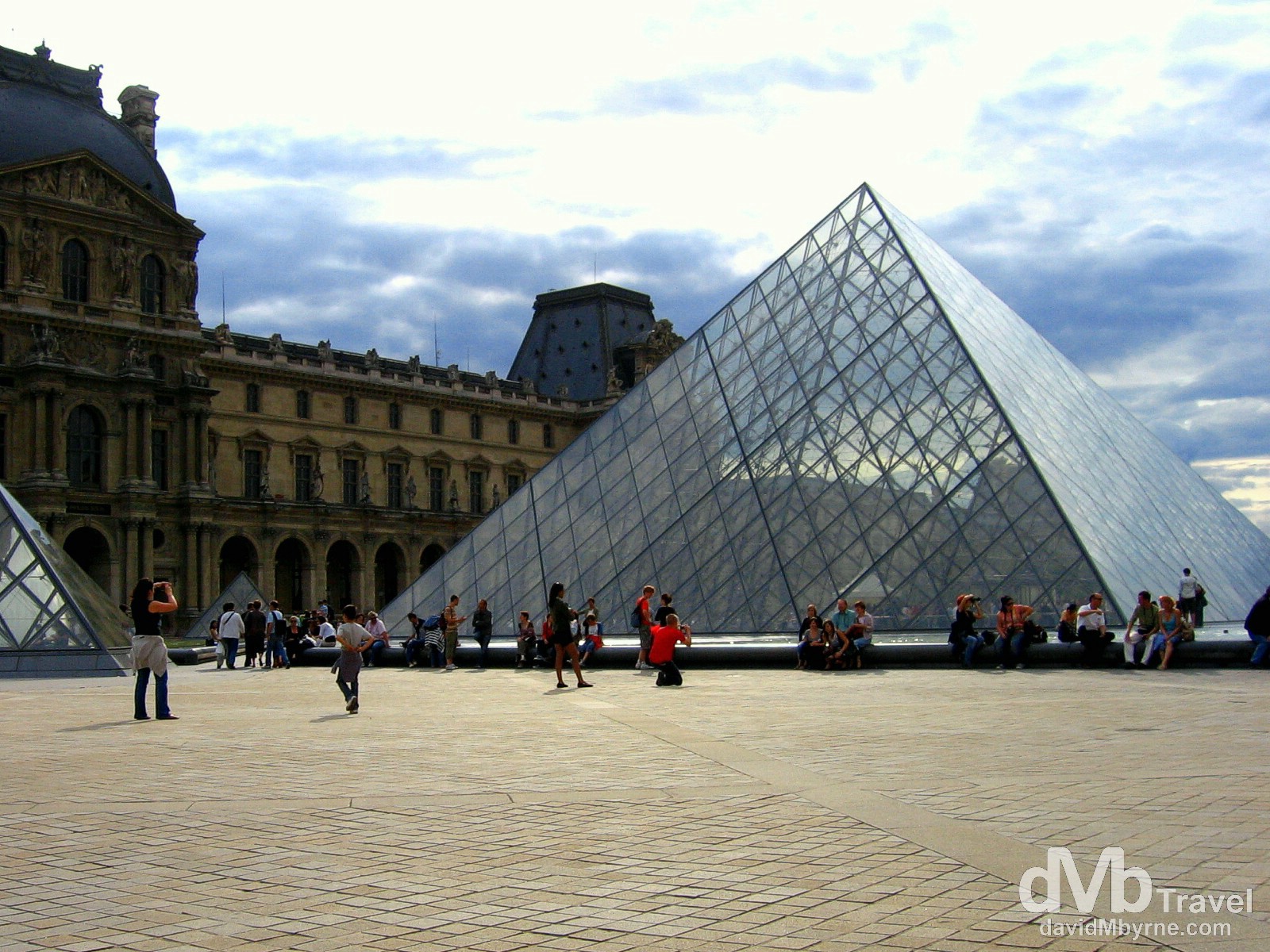Palais du Louvre (Louvre Palace), which houses the giant collection of the Louvre Museum, cuts a grand Classical swathe right through the centre of the French capital of Paris, its stately ranks of carved pilasters, arches and pediments stretching west along the right bank of the River Seine. Before becoming a museum during the French Revolution, the Louvre was for centuries the home of the French court and almost every French ruler with a taste for grandeur built on the site, right down to President Mitterand. For all its many transformations over the years the palace as remained a surprisingly harmonious building, with a grandeur, symmetry, and Frenchness entirely suited to this most historic of Parisian edifices.

Cour Napoléon (the Napoleon Courtyard), Palais du Louvre (Louvre Palace) (![]() ), Paris, France. August 18th 2007 || From an August 2007 visit to Paris, France
), Paris, France. August 18th 2007 || From an August 2007 visit to Paris, France
For all its historic & artistic stone grandeur, the Louvre’s most recognisable feature is a massive modern-day greenhouse-like structure, the controversial Louvre Pyramid. It arrived as part of a makeover in 1989 and erupts from the centre of the palace’s Cour Napoléon (the Napoleon Courtyard). The main reception area of the Louvre Museum, probably the world’s most famous museum, is right below and peering up though the pyramid from the subterranean bowels of the museum is one of those quintessential Louvre experiences.
– Earnest Hemingway
______________________________________________________________________

